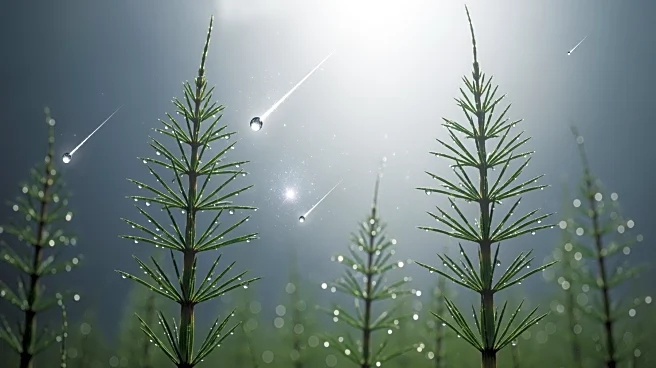What's Happening?
Researchers in New Mexico have discovered that a 400-million-year-old plant, Equisetum laevigatum, contains water with oxygen isotope ratios similar to those found in meteorites. This finding suggests
that the plant may hold clues to Earth's ancient climates. The study, led by Professor Zachary Sharp from the University of New Mexico, indicates that these plants naturally purify water in a way that defies modern climate models. The research, published in the Proceedings of the National Academy of Sciences, could provide insights into prehistoric atmospheric conditions.
Why It's Important?
The discovery of extraterrestrial-like water in ancient plants offers a new perspective on Earth's climatic history. By analyzing the isotope ratios in these plants, scientists can reconstruct past climate conditions, filling gaps in our understanding of Earth's environmental changes. This research could enhance climate models and inform predictions about future climate shifts. The findings also highlight the potential of using ancient plants as natural archives of Earth's atmospheric history, contributing to the broader field of paleoclimatology.
What's Next?
Researchers will likely continue to study Equisetum laevigatum and other ancient plants to gather more data on prehistoric climates. The development of new analytical techniques could improve the accuracy of climate reconstructions. As scientists refine their understanding of Earth's past climates, this research may influence climate policy and conservation efforts. The study also opens avenues for exploring the potential of ancient plants in understanding extraterrestrial environments.
Beyond the Headlines
The research underscores the interconnectedness of Earth's history and the cosmos, as the isotope patterns resemble those found in meteorites. It challenges existing climate models and encourages a reevaluation of how we interpret environmental data. The study also highlights the importance of interdisciplinary research, combining plant biology, geochemistry, and planetary science to uncover new insights into Earth's past.














